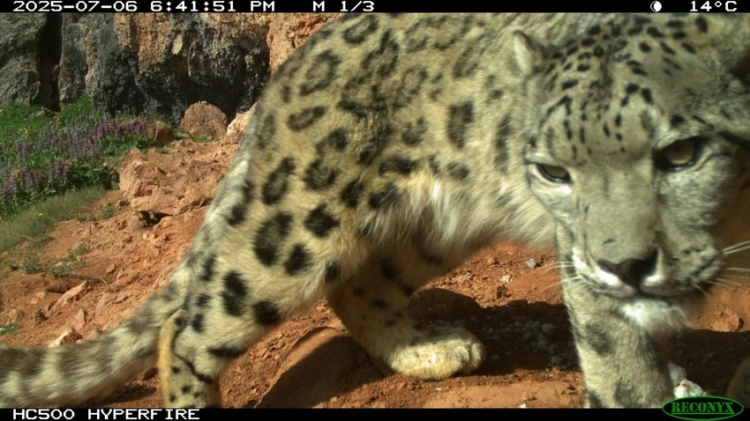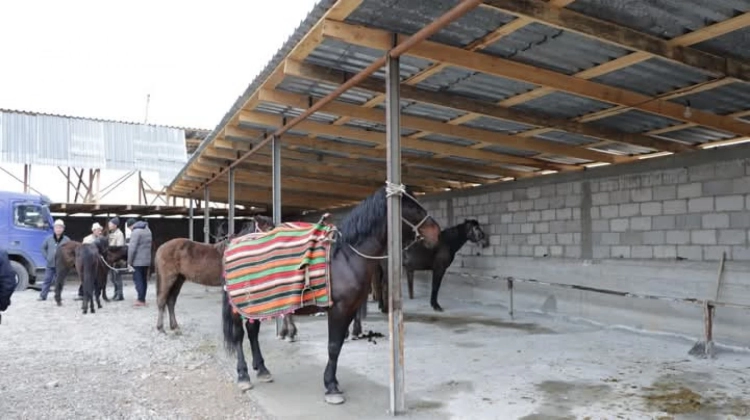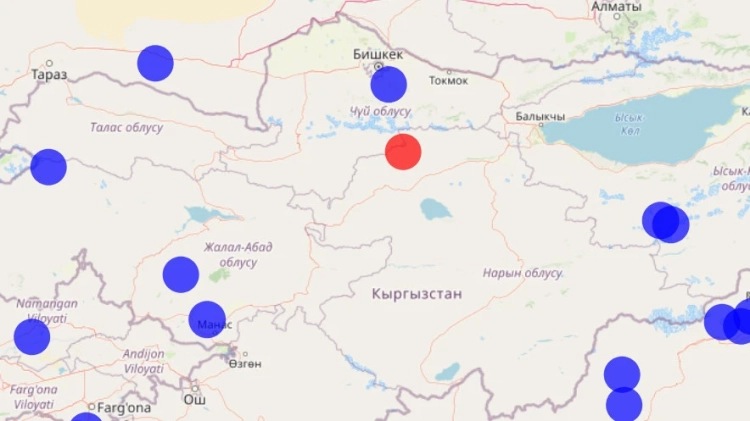
In certain areas of the Earth, strong underground tremors sometimes occur, a rumble is heard, and...

In Kyrgyzstan, the latest satellite monitoring methods have begun to be used to prevent natural...

At the beginning of our century, in the Chuy Valley (now the Issyk-Ata district), there lived a...

Ancient Kyrgyz Ideas about the Structure of the World Human thought has never been satisfied with...

The relationship of humans to nature, animals, and plants is determined not only by their natural...

Alongside correct, positive interpretations of natural phenomena, the Kyrgyz also held incorrect,...

On May 13, 2014, at 07:18, an earthquake with a magnitude of 3-3.5 occurred in the Chui region....

In the Naryn region, employees of the state natural park "Salkyn-Tor" conducted a...

Once upon a time, there lived two khans next to each other. Each of them had a son. From...

Weather and its Predictors. Nomadic life is characterized not only by closeness to nature but also...

Did the ancient Kyrgyz have ideas about the movement and structure of the Earth's surface?...

Essepchi Nasyr Ake from Alai paid great attention to the plant and animal world for the purpose of...

Jusup Mamai, the Great Narrator of the Epic "Manas" He was born on May 4, 1918, in the...

Kyrgyz Calendar with a 12-Year Cycle Among the Kyrgyz (as well as many other peoples), a 12-year...

The State Agency for Environmental Protection and Forestry (GAOOSiLH) has suspended sport and...

It is very difficult to hunt a truly trophy animal. In different regions of Kyrgyzstan, the size...

Commercial Animals. Sources from the 19th to early 20th centuries contain information about wild...

The Kyrgyz determined a person's age using the muchel — a 12-year animal cycle. It was also...

Geographical Information: The lake is located in the Naryn region, Ak-Sai valley, on the border...
In the Salkyn-Tör State Nature Park, snow leopards, argalis, ibexes, and bears have been captured...

When: From September 19 to October 18...

Guides and gamekeepers hunting in Kyrgyzstan. They are excellent hunters who have been engaged in...

The State Veterinary and Phytosanitary Surveillance Service reminds: Cattle markets serve as the...

Tanning sheepskin with ayran. Mid-19th century. The photograph is kept in the State Museum The...

According to information from seismologists, tremors were not detected in Almaty; however, the...
In the Kochkor district, hunters have begun actively culling predatory animals, as reported by...

On June 1, the great storyteller of the epic "Manas," Jusup Mamay, passed away at the...

Geographical Information: An astonishingly beautiful corner of nature in southern Kyrgyzstan at an...

Tootaydyn Ogu (stars I and V, located below the Belt of the Three Kings). The ancient Kyrgyz were...
In the Issyk-Kul region, an active fight against predators threatening livestock has begun, reports...

Omuraliyev Mederbek Omuraliyevich Candidate of Geological and Mineralogical Sciences. Born in...

The Kyrgyz State Circus is hosting performances by a Moscow troupe. The program is titled...

Urkash Mambetaliev (born 1934) is a soloist-manaschi of the Kyrgyz State Philharmonic named after...

Leather. From the leather and hides of domestic and wild animals - horses, cows, camels, yaks,...

Processing of Hides and Leathers Animal hides and the leather made from them were of significant...

Esapchi Alybai from Naryn could determine the time with a simple stick. He would stick a stick...

Once upon a time, there lived a man named Dzhancharbek. He decided to organize a feast and began...

The fauna of the Chui Valley is part of the Western Tienir-Tous zoogeographic region. According to...

Rope weaving. Batken district. In the economic life of the Kyrgyz, the lasso has wide...

Methods of Raw Material Processing The processing of livestock raw materials, as well as the...

How Animals Paved the Great Silk Road “The ‘discoverers’ of the Great Silk Road were animals,” say...

If we consider events spanning a longer geological time, the ideas expressed in the epic...

Badger — Meles meies Linn; (in Kyrgyz: Kashkulak) The badger is widely distributed across the...

Lake Suttyu-Bulak or "Milk Lake" The lake is located in the "Semenovskoye"...

Omuraliyeva Aiyumzhan Born in 1977. Graduated from the Kyrgyz National University, Faculty of...

In the Talas region of Kyrgyzstan, new methods for protecting biodiversity are being tested:...

ACHUU BULAK. Not far from here, in a small gorge, there is a spring. It was formed a long time...